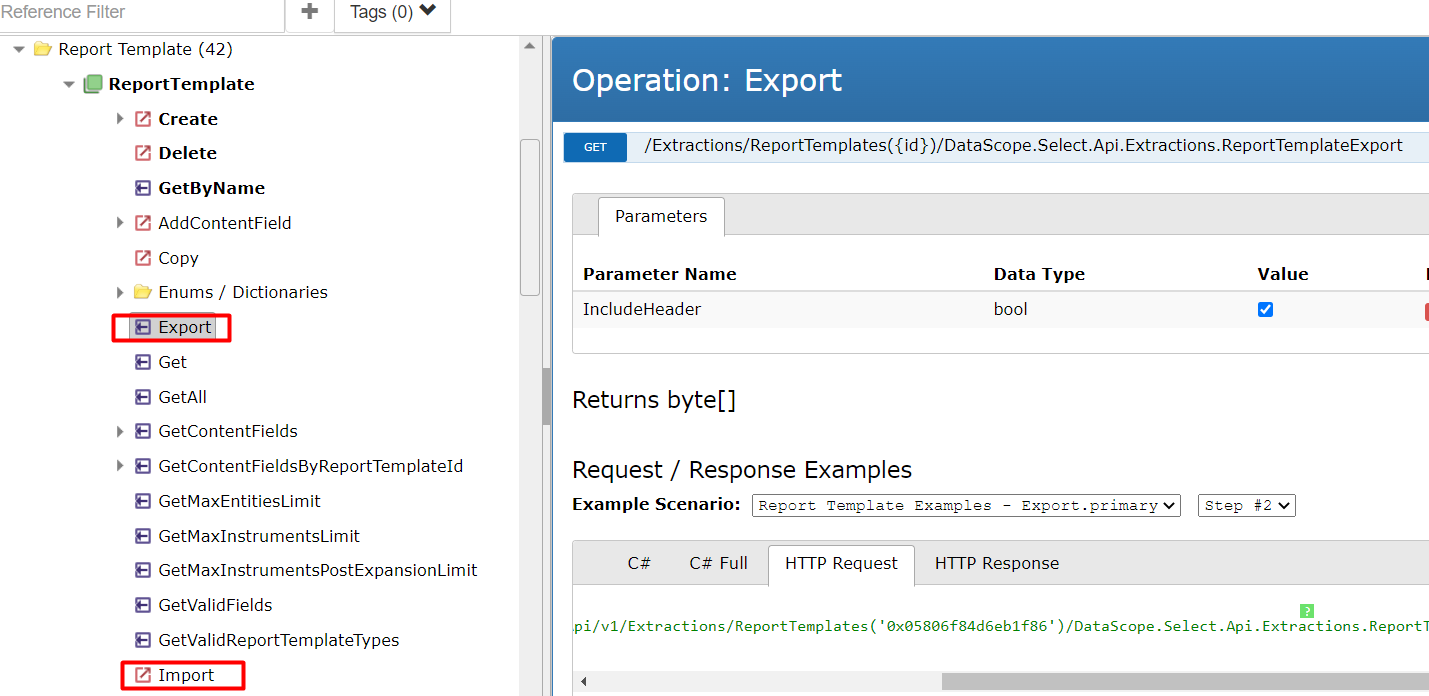Converting between export/import format and API format
Hi,
I'm a user of DSS to create some market data extracts (at the moment focusing on intraday summaries for future chians).
The way as manage my configurations, particularly for report and schedule definition is as follows:
- Create a sample online (e.g. "DATA-TY")
- Export it (e.g. "DATA-TY.xml") and create a template from it (e.g. "DATA-generic.xml")
- Use text tools such as vscode to quickly duplicate into similar files (e.g. "DATA-TU.xml", "DATA-FV.xml", ...)
- Upload all these files, e.g. to create schedules
My problem is that step 4 can be very cumbersome, and needs to redone every time I change a small thing in my templates. I'm therefore wondering if there is an API call for importing (report and schedule) definitions that were exported from the UI?
Looking at the API reference I only see odata json-type endpoints, without a straightforward way of converting back and forth between this and the xml formats (which again are what I get when I export/import). Am I missing something? What is the best way to automate transforming a local "DATA-TY.xml" into an online report definitions?
Best Answer
-
Thanks for reaching out to us.
I checked the DSS API Reference Tree and found the import and export functions of the Report Template.

Therefore, you can use the DSS REST API to import and export report templates.
Instead of exporting and importing, you can use the API to create report templates directly.

I think it is more convenient than exporting and importing.
Moreover, you can use on-demand extraction to extract data. The on-demand extraction doesn't require a pre-defined instrument list or report template to perform an extraction. The on-demand extraction is a once-off extraction containing an instrument list and report template settings. For example, the following is an on-demand extract to extract TickHistoryIntradaySummaries data.
{
"ExtractionRequest": {
"@odata.type": "#DataScope.Select.Api.Extractions.ExtractionRequests.TickHistoryIntradaySummariesExtractionRequest",
"ContentFieldNames": [
"Close Ask",
"Close Bid",
"High",
"High Ask",
"High Bid",
"Last",
"Low",
"Low Ask",
"Low Bid",
"No. Asks",
"No. Bids",
"No. Trades",
"Open",
"Open Ask",
"Open Bid",
"Volume"
],
"IdentifierList": {
"@odata.type": "#DataScope.Select.Api.Extractions.ExtractionRequests.InstrumentIdentifierList",
"InstrumentIdentifiers": [{
"Identifier": "IBM.N",
"IdentifierType": "Ric"
}],
"ValidationOptions": null,
"UseUserPreferencesForValidationOptions": false
},
"Condition": {
"MessageTimeStampIn": "GmtUtc",
"ReportDateRangeType": "Range",
"QueryStartDate": "2023-03-01T00:00:00.000Z",
"QueryEndDate": "2023-03-02T00:00:00.000Z",
"SummaryInterval": "OneHour",
"TimebarPersistence": true,
"DisplaySourceRIC": true
}
}
}As you see, the request contains the instrument list (IBM.N) and the content fields and conditions of the TickHistoryIntradaySummaries report template.
I hope that this information is of help.
1
Answers
-
Hi @Jirapongse,
Thank you, I don't think I appreciated how useful the API reference tree was! I'll explore that avenue.
I know the json way but was trying to get things that are compatible with manual operations.
Best,
Maxime0
Categories
- All Categories
- 6 AHS
- 39 Alpha
- 161 App Studio
- 4 Block Chain
- 4 Bot Platform
- 16 Connected Risk APIs
- 47 Data Fusion
- 30 Data Model Discovery
- 608 Datastream
- 1.3K DSS
- 577 Eikon COM
- 4.9K Eikon Data APIs
- 7 Electronic Trading
- Generic FIX
- 7 Local Bank Node API
- Trading API
- 2.7K Elektron
- 1.3K EMA
- 236 ETA
- 519 WebSocket API
- 33 FX Venues
- 10 FX Market Data
- 1 FX Post Trade
- 1 FX Trading - Matching
- 12 FX Trading – RFQ Maker
- 5 Intelligent Tagging
- 2 Legal One
- 20 Messenger Bot
- 2 Messenger Side by Side
- 9 ONESOURCE
- 7 Indirect Tax
- 59 Open Calais
- 264 Open PermID
- 39 Entity Search
- 2 Org ID
- PAM
- PAM - Logging
- 8.4K Private Comments
- 6 Product Insight
- Project Tracking
- ProView
- ProView Internal
- 20 RDMS
- 1.4K Refinitiv Data Platform
- 367 Refinitiv Data Platform Libraries
- 3 Refinitiv Due Diligence
- LSEG Due Diligence Portal API
- 3 Refinitiv Due Dilligence Centre
- Rose's Space
- 1.1K Screening
- 18 Qual-ID API
- 13 Screening Deployed
- 23 Screening Online
- 10 World-Check Customer Risk Screener
- 990 World-Check One
- 44 World-Check One Zero Footprint
- 45 Side by Side Integration API
- Test Space
- 3 Thomson One Smart
- 1.2K TR Internal
- Global Hackathon 2015
- 2 Specialists Who Code
- 10 TR Knowledge Graph
- 150 Transactions
- 142 REDI API
- 1.7K TREP APIs
- 4 CAT
- 21 DACS Station
- 117 Open DACS
- 1.1K RFA
- 103 UPA
- 172 TREP Infrastructure
- 224 TRKD
- 886 TRTH
- 5 Velocity Analytics
- 5 Wealth Management Web Services
- 60 Workspace SDK
- 9 Element Framework
- 5 Grid
- 13 World-Check Data File
- Yield Book Analytics
- 46 中文论坛